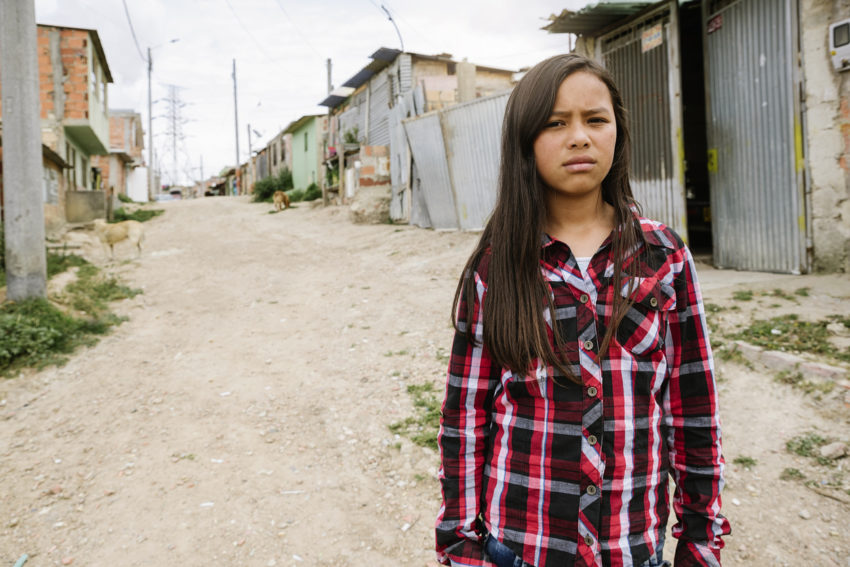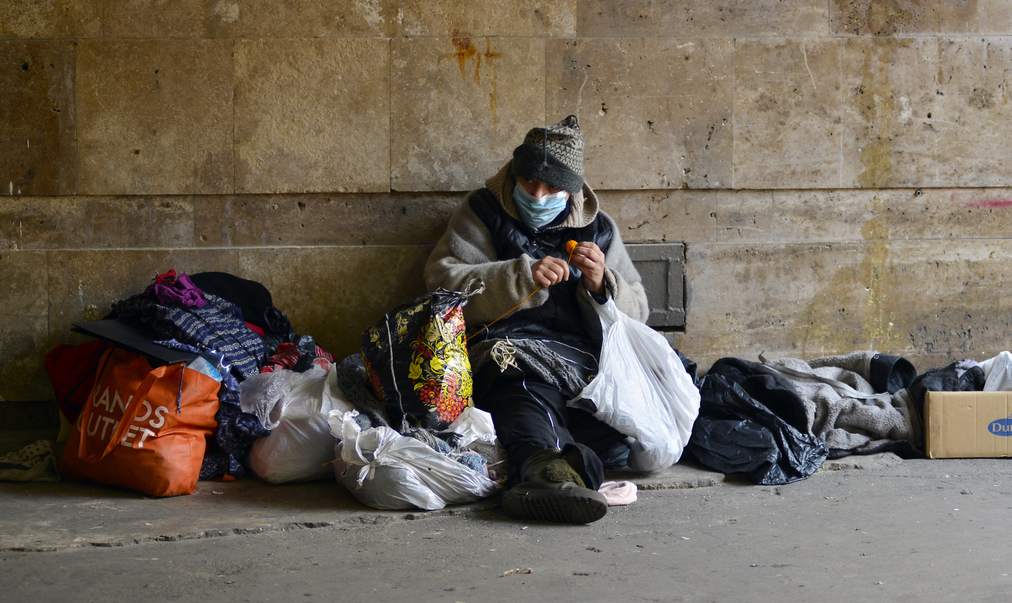
Share On Social!
This is part of the Salud America! Achieving a Cohesive Culture for Health Equity in Latino and All Communities: A Research Review»
Latino Families Are More Likely to Live in Poverty
Child poverty rates are more than twice as high for black children than white children (38% vs 14%, 2019 data)10 and Latino children than white children (23.7% vs 8.9%, 2018 data) across the United States,5 according to data published in the 2019 County Health Rankings and Roadmaps Report10 and the 2018 U.S. Census Bureau Current Population Report.5
The Institute for Policy Studies found that between 1983 and 2013 there was a 51% decline in the wealth of the median Latino household (from $4,100 to $2,000); during this same period, wealth of the median white household increased by 14% from $105,300 to $120,300). It was projected that by the year 2020, there would be a further 12% decline in Latino wealth.
With these projections, the median white household would own 68 times more wealth than the median Latino household. If these numbers aren’t enough cause for concern, the 2024 projection is staggering: median white households will hold 75 times more wealth than their Latino counterparts. Job market statistics show similar trends: a recent meta-analysis of 24 studies of labor market discrimination found that whites received an average of 24% more job callbacks than Latinos.11
 In 2016, the wealth of a median Latino household was $6,300, compared to $140,500 for a white household.12 The “lack of savings and assets that underpin household wealth has left these [Latino] communities in a difficult position as they work to achieve long-term economic stability,” and their net worth could hit zero by 2073.12
In 2016, the wealth of a median Latino household was $6,300, compared to $140,500 for a white household.12 The “lack of savings and assets that underpin household wealth has left these [Latino] communities in a difficult position as they work to achieve long-term economic stability,” and their net worth could hit zero by 2073.12
Current laws contribute to these trends. Without significant changes to federal policy, current trends estimate that it will take 2,000 years for the median Latino family to match the current wealth of the median white family. Unfortunately, passage of the 1.9 trillion-dollar Tax Cuts and Jobs Act passed in December 2017 gave 72% of tax cuts to the richest 20% of households in the U.S.
Because white taxpayers are more likely to be in the upper income brackets, they are more likely to benefit from the new tax law. Research shows that white taxpayers received 79.5% of the tax cuts, while Latinos and blacks received 6.7% and 5.0%, respectively, effectively excluding Latino and black households from the benefits of the Tax Cuts and Jobs Act, thus perpetuating the racial economic divide in the U.S.13
Far-Reaching Effects of Poverty
The far-reaching effects of poverty have been well documented; the material hardships associated with poverty, including food insecurity and difficulty meeting basic medical and housing needs, lead to worse health outcomes.86
An inability to provide for family members leads to parental stress, which compromises marital and parent-child relationships due to a reduced capacity for warm and responsive interactions. The chaotic home lives and the community conditions characteristic of low SES areas — such as community violence and substandard housing — are linked to worse socioemotional outcomes for children. Poorer quality schools, high levels of unemployment, social isolation, and a lack of positive peer influences are common in high-poverty areas.87
Those living in poverty are often socially excluded due to the financial inability to participate in social activities. Social networks, including family, friends, work-based, and community relationships, whether face-to-face or remote, are important.
Interaction with others does affect outcomes, as relationships can facilitate the sharing of resources, help increase opportunities, and improve livelihood. In general, high levels of social capital in a community are associated with lower crime rates, better health, and overall well-being.87 People who are more satisfied with life and who have a greater sense of well-being are more likely to be socially engaged, manage their health problems better, and live longer than those with high levels of negative emotion. The concept of positive health posits that people desire well-being above and beyond even the relief of their suffering.88
Quick links from our Research Review »
See the Guide: System Justification!
See the Guide: Moral Disengagement!
More from our Research Review »
- Introduction/Methods
- Research: Poverty among Latinos
- Research: Rural Poverty
- Research: Poverty and Healthcare
- Research: Discrimination and Education
- Research: Discrimination and Outcomes
- Mechanism: Implicit Bias
- Mechanism: System Justification
- Mechanism: Moral Disengagement
- Strategy: Intergroup Contact Theory
- Strategy: Peer Modeling
- Strategy: Implicit Bias Training
- Strategy: Effective Communication
- Strategy: Social Media for Social Change
- Strategy: Building Social Cohesion
- Policy Implications
- Future Research
References for this section »
5. Semega J, Kollar M, Creamer J, Mohanty A. Income and Poverty in the United States: 2018 Current Population Reports.
10. County Health Rankings & Roadmaps. 2019 County Health Rankings Key Findings Report.; 2019. https://www.countyhealthrankings.org/reports/2019-county-health-rankings-key-findings-report. Accessed June 11, 2020.
11. Bouie J. The wealth gap between whites and blacks is widening. Slate. https://slate.com/news-and-politics/2017/09/the-wealth-gap-between-whites-and-blacks-is-widening.html. Published 2017. Accessed June 11, 2020.
12. Asante-Muhammad D. Racial Wealth Snapshot: Latino Americans. Prosperity Now. https://prosperitynow.org/blog/racial-wealth-snapshot-latino-americans. Published 2018. Accessed June 11, 2020.
13. Wiehe M., Nieves E, Greer J, Newville D. Race, Wealth, and Taxes: How the Tax Cuts and Jobs Act Supercharges the Racial Divide.; 2018. https://prosperitynow.org/sites/default/files/resources/ITEP-Prosperity_Now-Race_Wealth_and_Taxes-FULL REPORT-FINAL_6.pdf. Accessed June 11, 2020.
86. Chaudry A, Wimer C. Poverty is not just an indicator: The relationship between income, poverty, and child well-being. Acad Pediatr. 2016;16(3):S23-S29.
87. Gilchrist A, Kyprianou P. Social networks, poverty and ethnicity | JRF. https://www.jrf.org.uk/report/social-networks-poverty-and-ethnicity. Published 2011. Accessed June 15, 2020.
88. The Robert Wood Johnson Foundation (RWJF). Exploring the Concept of Positive Health: Identifying Strengths to Prevent Illness, Improve Well-Being. https://www.rwjf.org/en/library/research/2017/08/exploring-the-concept-of-positive-health.html. Published 2017. Accessed June 15, 2020.
By The Numbers
3
Big Excuses
people use to justify discriminatory behavior



